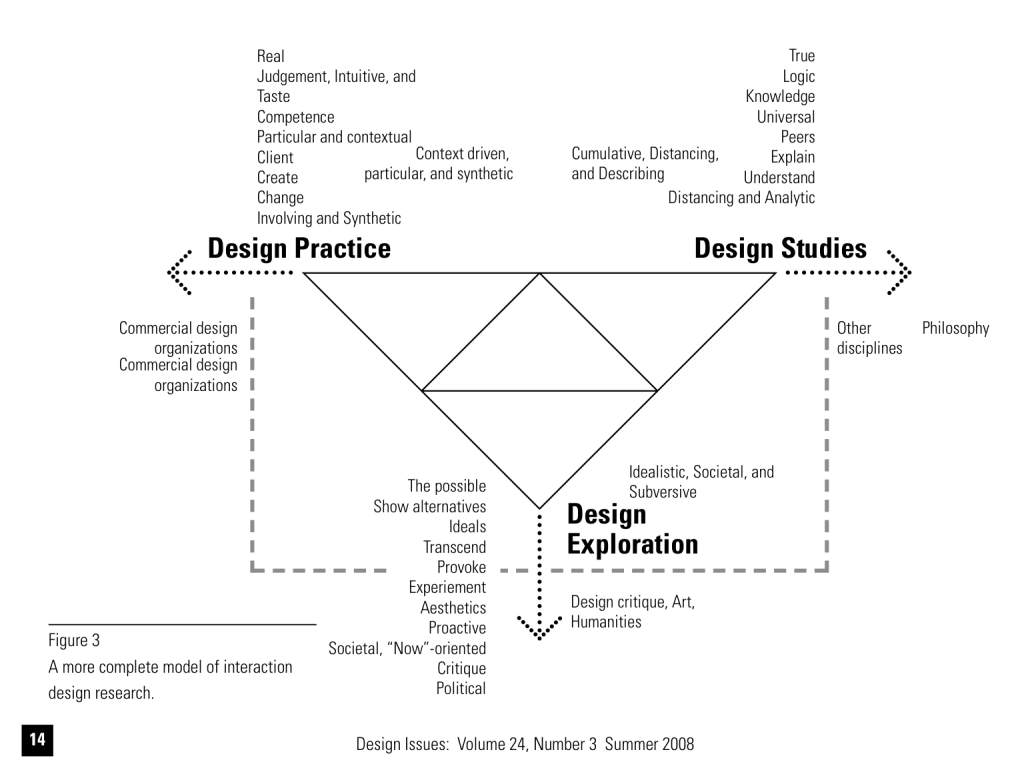Fallman | The Interaction design Research Triangle…
Literature review: Fallman, Daniel. “The Interaction Design Research Triangle of Design Practice, Design Studies, and Design Exploration.” Design Issues 24.3 (2008): 4-18. Print.
What is the main argument of the author?
The goal of this paper was to present ‘refined models of interaction design research; embracing both what it currently is as well as pointing towards what it could be…” through tools that Fallman creates (4). He basically outlines the three ways that design research models: industry, academia, and society. He describes the different ways we approach and research design from these areas but encourages to work consider a more fluid way of moving between the models in order to create better designs.
Some of the high-level differences he notes are that industry is more concerned with long-term collaborations and the industry. Academia is more concerned with building an intellectual tradition with reflections on the design field and what they could mean for the future. Finally, design exploration isn’t concerned with commercialization, but rather sketching or experimenting with things speculatively to shape the future.
Thallman’s detailed triangle.
Why might this be relevant to my thesis?
I’m not sure. Maybe a final form for whatever my thesis is to take? The thing is, I still feel like this creates too much distance between practicing designers and academics. Like, this paper is talking about the need for these types of researchers to interface more in order to enhance whatever industry they are working in—but the only people who are reading this are probably academics. I do want my thesis to effect more people. Food for thought.
